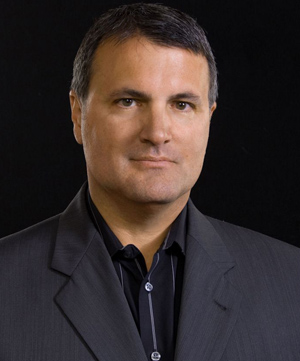Under Gov. Jerry Brown’s administration, California began offering grants to incentivize projects for reducing livestock methane emissions. Gov. Gavin Newsom has steadily decreased that funding, with no support offered in the governor’s initial budget proposal for the coming fiscal year. Instead, the two programs on dairy digesters and alternative manure management would be replaced by a new low-interest loan program.
Both the administration and Democratic state senators are now proposing to restore a portion of the prior funding, but at a level well below the Brown administration investments. Industry groups have applauded the new funding but called it far short of the amount needed to meet state air quality goals for 2030.
This follows a recent report by the United Nations Environment Programme that calls cutting methane pollution critical for keeping global warming below the threshold agreed to by world leaders.
Michael Boccadoro, the executive director of the Agricultural Energy Consumers Association, told a Senate budget subcommittee last week that CDFA’s Dairy Digester Research and Development Program is the state’s most productive greenhouse gas reduction program overall.
An annual report analyzing the state’s investments of cap-and-trade revenues finds the program costs just $9 per ton of emissions removed. It is followed by a wetlands watershed and restoration program, at $37 per ton. CDFA’s Alternative Manure Management Program (AMMP), meanwhile, costs $60 per ton, and a new program aimed at improving energy efficiency and installing solar panels in farmworker housing was the most expensive, at $860 per ton.
Part of the challenge has been that cap-and-trade funding is anticipated to decline as the market sees fewer carbon credits purchases from polluters. To resolve this, the Senate agriculture plan calls for just $10 million to come from the Greenhouse Gas Reduction Fund and another $50 million from the state’s taxpayer fund.
Boccadoro called that a good start.

Michael Boccadoro, executive director of the Agricultural Energy Consumers Association
“But it falls far short of the need and demand for this program in the short term,” he said.
Brown had allocated $99 million for those programs in his last two years in office. Newsom had initially proposed just $20 million in his 2020-2021 budget, which was later cut entirely due to economic uncertainty surrounding the pandemic. In February CDFA Secretary Karen Ross said she hoped the Biden administration would make up for the state’s cuts to the methane programs.
“We are at a point of maturation in these programs that hard decisions have to be made with the scarce dollars that we have,” explained Ross.
Now the May Revision of the administration’s budget proposes $60 million, but entirely from the taxpayer fund, owing to an expected cash infusion of $100 billion this year. Yet the funding is likely to be a one-time expense, adding further uncertainty to the programs' future.
In 2016 Brown signed into law Senate Bill 1383, which set a goal of reducing short-lived pollutants by 40% of 2013 levels by 2030. Since that time, the state has slashed manure methane emissions by 25%.
“Methane emission reductions—both on the dairy side as well as the [food] waste side—are a large chunk [of the overall pollutants]: about a third of the expected emission reductions needed to meet the state's 2030 goals,” said Ross Brown, who focuses on climate policies for the nonpartisan Legislative Analyst’s Office, during the Senate hearing.
Interested in more coverage and insights? Receive a free month of Agri-Pulse West
In a press call Friday on the May Revision, Secretary Ross said dairy families “have really stepped up and shown leadership” in reducing emissions. Dairy digesters have been converting the methane into renewable energy while also removing criteria pollutants in the air and mitigating water quality impacts, explained Ross.
AMMP has helped more than 235 small-scale producers to convert nutrient-rich manure into compost and other products. According to the California Climate and Agriculture Network, the dairy and livestock producers sought more than $54 million in AMMP grant funding last year, far exceeding available funding.
The dairy digester program, however, has been facing increasing opposition from environmental groups. The Senate’s plan focuses exclusively on AMMP, as do legislative proposals for climate bonds on the November 2022 ballot.
During the hearing, a policy advocate for the Leadership Counsel for Justice and Accountability argued that subsidies for digesters “perpetuate and exacerbate local pollution in communities near dairies and further entrench natural gas infrastructure at a time when the state must be shifting to zero emissions energy.”
For more news, go to www.Agri-Pulse.com.


